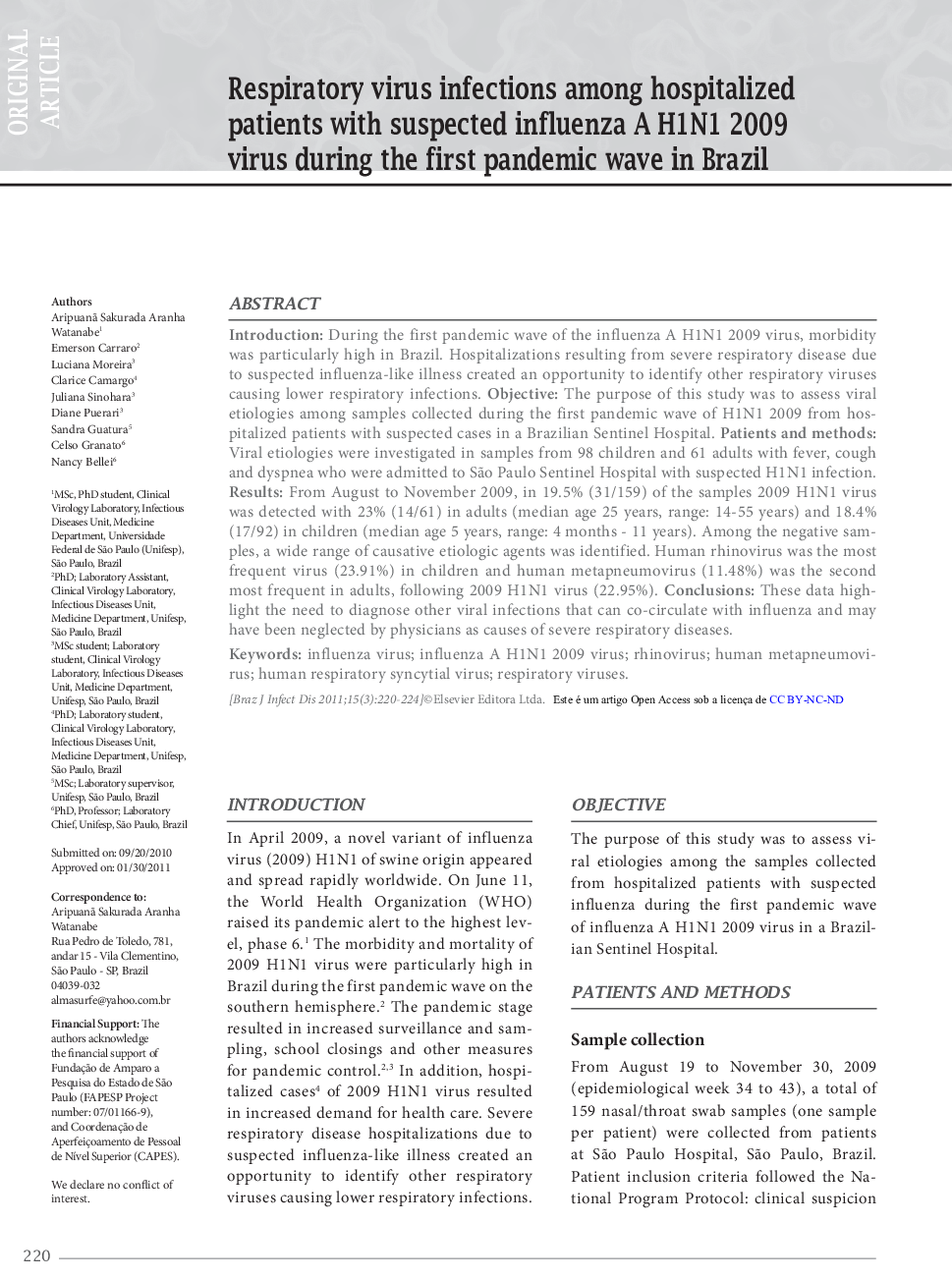| Article ID | Journal | Published Year | Pages | File Type |
|---|---|---|---|---|
| 3344410 | The Brazilian Journal of Infectious Diseases | 2011 | 5 Pages |
IntroductionDuring the first pandemic wave of the influenza A H1N1 2009 virus, morbidity was particularly high in Brazil. Hospitalizations resulting from severe respiratory disease due to suspected influenza-like illness created an opportunity to identify other respiratory viruses causing lower respiratory infections.ObjectiveThe purpose of this study was to assess viral etiologies among samples collected during the first pandemic wave of H1N1 2009 from hospitalized patients with suspected cases in a Brazilian Sentinel Hospital. Patients and methods: Viral etiologies were investigated in samples from 98 children and 61 adults with fever, cough and dyspnea who were admitted to São Paulo Sentinel Hospital with suspected H1N1 infection.ResultsFrom August to November 2009, in 19.5% (31/159) of the samples 2009 H1N1 virus was detected with 23% (14/61) in adults (median age 25 years, range: 14-55 years) and 18.4% (17/92) in children (median age 5 years, range: 4 months - 11 years). Among the negative samples, a wide range of causative etiologic agents was identified. Human rhinovirus was the most frequent virus (23.91%) in children and human metapneumovirus (11.48%) was the second most frequent in adults, following 2009 H1N1 virus (22.95%).ConclusionsThese data highlight the need to diagnose other viral infections that can co-circulate with influenza and may have been neglected by physicians as causes of severe respiratory diseases.
